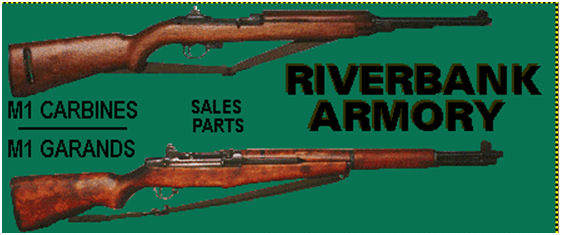Operation: Semiautomatic, Gas Operated
Caliber: .30 (.30-06)
Length: 43.6 in. (1103 mm)
Weight unloaded: 9 lb 8 oz (4.37 kg)
Barrel: 24 in. 4 grooves, right hand twist
Magazine: 8 round internal box, clip loaded, clip ejected after last round fired
Muzzle: velocity 2800 fps, 2903 ft-lb
500 yds: 1918 fps, 1362 ft-lbs
Ammunition: 174 gr bullet, 50 gr charge, Ball M1
Effective Range: 440 yds
Classification: "Standard" from 1936 until M14 adopted in 1957
Total production: Approx. 4,040,000
|
|
"In my opinion, the M1 Rifle is the greatest battle implement
ever devised."
George S. Patton, Jr.
-
The M1 Garand is a full blown combat rifle with maxiumum range of 3,200 meters
and maximum effective range of 400 meters.....or the greatest distance at
which the weapon can be expected to fire accurately to inflict casualties or
damage. Fully loaded with 8-round en bloc clip, cleaning kit in butt stock,
sling and with stock of dense GI issue wood the M1 weighed in at 11-1/4 lbs.
The M1 came into production in 1936 using the .30-06 rifle cartridge.
-
The M1 was the designated service
rifle of World War II and the Korean War for the United States Military.
It was designed
for semi-automatic fire using a spring steel clip containing 8 rounds.
This is where the term "clip" originated. All other rifles used a detachable
or fixed magazine. The M1 Garand was designed for long range accuracy
i.e. battle zero was set for any target less than 200 yards It was the
only rifle that had fully adjustable i.e. windage and elevation, rear sights.
-
The M1C, manufactured by Springfield Armory in late 1944-1945, mounted either a M81 or M82 scope, a T4 leather cheek pad, and an M2 flash hider.
- The The original rear sight of the M1 would not hold adjustments very well, so a locking bar was added in late 1942 which could be tightened after sights were set.
The US Rifle M1 was the first semiautomatic rifle to be the
standard small arm of the US Military, and the first semiautomatic
rifle to be adopted by a major military power. It was the product of a
genuine genius, John Cantius Garand. While the M1 Rifle was never officially
referred to as the Garand, it is known by no other name so widely. First
adopted in 1936, the M1 Rifle served the US in World War II, Korea,
a host of "police actions" and interventions, and, in the hands
of allies, in the Vietnam War. Even there the US Army fielded accurized
sniper M1 rifles even though the M1 had by that time been supplanted by
the M14 and later the M16.
To many the M1 Rifle has a classic elegance and grace characteristic
of a bygone era, when steel was forged in white heat and walnut was carefully
shaped for both form and function. "There will never be again such a rifle,
so brimming with the genius of an individual mind, so well constructed
to outlive us all, so sculpted as to ask the hand to caress."
Criticisms of the M1 are its weight, limited ammunition supply, the fact that
single rounds could not be pushed in (8 round clip, or nothing). Also, the spent
clip was automatically ejected after the last round was fired, making a distinctive
sound, which could be fatal in close quarter or sniper operations.
As a supplement to the Garand the M1 Carbine was developed. It was totally
different design philosophy with a smaller, less powerful cartridge and an
effective range of 300 yds max. It weighed almost exactly 1/2 that of the
M1 Garand. In many ways you could think of the M1 Carbine as a moderately
powerful, two-handed, long-barreled auto pistol with a shoulder stock.
(From: FM 23-5 U.S. Rifle Caliber .30, M1)
Disassembly into the Three Main Groups :
- A. The three main groups are the trigger housing group, the barrel and
receiver group and the stock group.
- B. To disassemble the rifle into the three main groups, first insure that
the weapon is clear and then allow the bolt to go forward by depressing the
follower with the right thumb and allowing the bolt to ride forward over the
follower assembly.
- C. Place the rifle butt against the left thigh, sights to the left. With
the thumb and forefinger of the right hand, pull downward and outward on
the rear of the trigger guard. Swing the trigger guard out as far as it
will go and lift out the trigger housing group.
- D. To separate the barrel and receiver from the stock lay the weapon on a
flat surface with the sights up, muzzle to the left. With the left hand,
grasp the rear of the receiver and raise the rifle. With the right hand,
give a downward blow, grasping the small of the stock. This will separate
the stock group from the barrel and receiver group.
|

GEORGE LIAKOS, OWNER
P.O. BOX 85
RIVERBANK, CA 95367
(209) 869-5576 |
|

